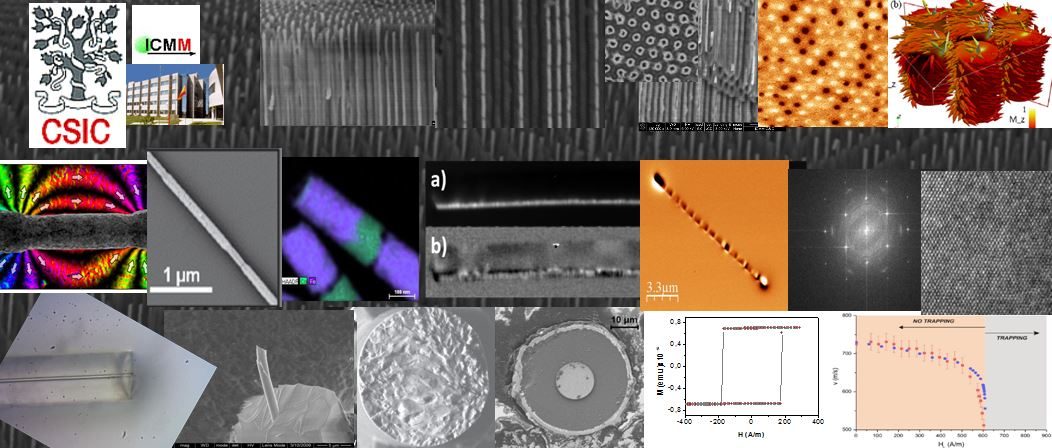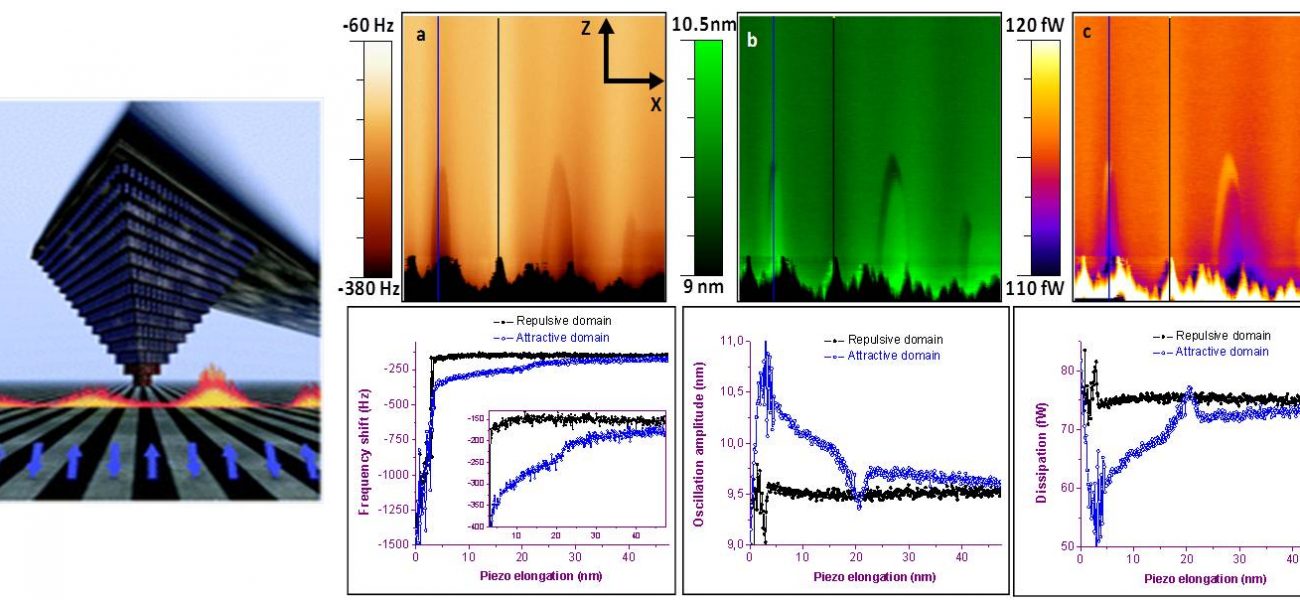|
|
“Stochastic vs. deterministic magnetic coding in designed cylindrical nanowires for 3D magnetic networks”
C. Bran, E. Saugar, J.A. Fernandez-Roldan, R.P. del Real, A. Asenjo, L. Aballe, M. Foerster, A. Fraile Rodríguez, E.M. Palmero, M. Vazquez and O. Chubykalo-Fesenko
Nanoscale 13 (2021) 12587
DOI: 10.1039/d1nr02337c
Advances in cylindrical nanowires for 3D information technologies profit from intrinsic curvature that introduces significant differences with regards to planar systems. A model is proposed to control the stochastic and deterministic coding of remanent 3D complex vortex configurations in designed multilayered (magnetic/non-magnetic) cylindrical nanowires. This concept, introduced by micromagnetic simulations, is experimentally confirmed by magnetic imaging in FeCo/Cu multilayered nanowires. The control over the random/deterministic vortex states configurations is achieved by a suitable geometrical interface tilting of almost non-interacting FeCo segments with respect to the nanowire axis, together with the relative orientation of the perpendicular magnetic field. The proper design of the segments’ geometry (e.g. tilting) in cylindrical nanowires opens multiple opportunities for advanced nanotechnologies in 3D magnetic networks.
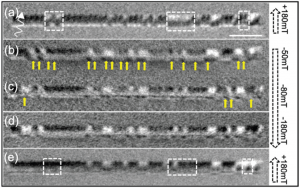
This work has been performed in collaboration between our GNMP group at ICMM/CSIC with ALBA Synchrotron Light Facility, CELLS, Barcelona, the Departament de Física de la Matèria Condensada, Universitat de Barcelona and the Group of Permanent Magnets and Applications, IMDEA Nanoscience, Madrid. It has been supported by the Spanish Ministry of Science and Innovation under Projects MAT2016-76824-C3-1-R, PID2019-108075RB-C31/AEI /10.13039/501100011033 and PGC2018-097789-B-I00 and the Regional Government of Madrid under Project S2018/NMT-4321 NANOMAGCOST-CM.
“Matteucci Effect and Single Domain Wall Propagation in Bistable Microwire under Applied Torsion”
A. Jiménez, E. Calle, J.A. Fernandez-Roldan, R.P. del Real, R. Varga and M. Vázquez
Phys. Status Solidi A 2021, 2100284
DOI: 10.1002/pssa.202100284
Systematic experimental results on the Matteucci effect in torsioned magnetostrictive FeSiB microwire are introduced observed during the propagation of a single domain wall (DW) under the action of axial driving magnetic field, Hdr. The Matteucci electromotive force (emf) is associated with depinning and annihilation of the DW. The emf amplitude is proportional to the DW velocity and the time derivative of the azimuthal magnetization, tailored by applied torsion. The clockwise/counterclockwise applied torsion dependence of Matteucci emf and DW velocity are experimentally determined for parallel and antiparallel Hdr. Asymmetric behaviors are observed for both, the sense of applied torsion and the direction of Hdr. The experimental data are discussed in terms of the magnetoelastic anisotropy introduced by torsion. Through analysis of the DW dynamics, such asymmetric behaviors are interpreted as a magnetochiral effect derived from the change of chirality of the propagating wall.
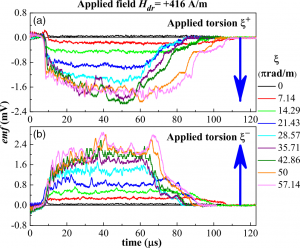
This Review Article is included in the special issue to celebrate the 60th anniversary of Physica Status Solidi, and it is a collaboration between our GNMP group and the Centre of Progressive Materials, P.J. Safarik University Kosiçe, Slovakia. It was supported by the Regional Government of Madrid under project S2018/NMT-4321 NANOMAGCOST-CM.
“Field tunable three-dimensional magnetic nanotextures in cobalt-nickel nanowires”
I.M. Andersen, D. Wolf, L.A. Rodriguez, A. Lubk, D. Oliveros, C. Bran, T. Niermann, U.K. Rößler, M. Vazquez, C. Gatel and E. Snoeck
Phys. Rev. Research 3 (2021) 033085
DOI: doi.org/10.1103/PhysRevResearch.3.033085
Cylindrical magnetic nanowires with large transversal magnetocrystalline anisotropy sustain nontrivial magnetic configurations resulting from the interplay of spatial confinement, exchange and anisotropies. Holographic vector-field electron tomography is employed to reconstruct the remanent magnetic states in CoNi nanowires with 10 nm resolution in 3D, with a particular focus on domain walls between remanent states and ubiquitous real-structure effects stemming from irregular morphology and anisotropy variations.
By tuning the applied magnetic field direction, both longitudinal and transverse multivortex states of different chiralities and peculiar 3D features such as shifted vortex cores are stabilized. The chiral domain wall between the longitudinal vortices of opposite chiralities exhibits a complex 3D shape characterized by a push out of the central vortex line and a gain in exchange and anisotropy energy. Exploiting these peculiar 3D spin configurations and their solitonic inhomogeneities is expected to improve magnetization switching in future spintronics, such as power-saving magnetic memory and logic applications
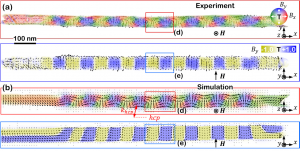
This work is the result of the international collaboration between our GNMP group, ICMM/CSIC, with the Centre d’Élaboration de Matériaux et d’Etudes Structurales, CNRS, Toulouse, and the Leibniz Institute for Solid State and Materials Research, IFW Dresden. It has been supported by Spanish MINECO under project PID2019-108075RBC31, and by the Regional Government of Madrid under Project S2018/NMT-4321 NANOMAGCOSTCM.
Jesús Nevado is with us thanks to the Fondo de Garantía Juvenil.
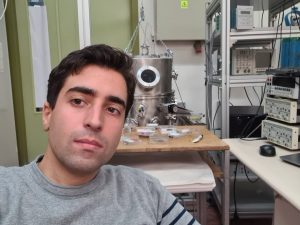
|
|


